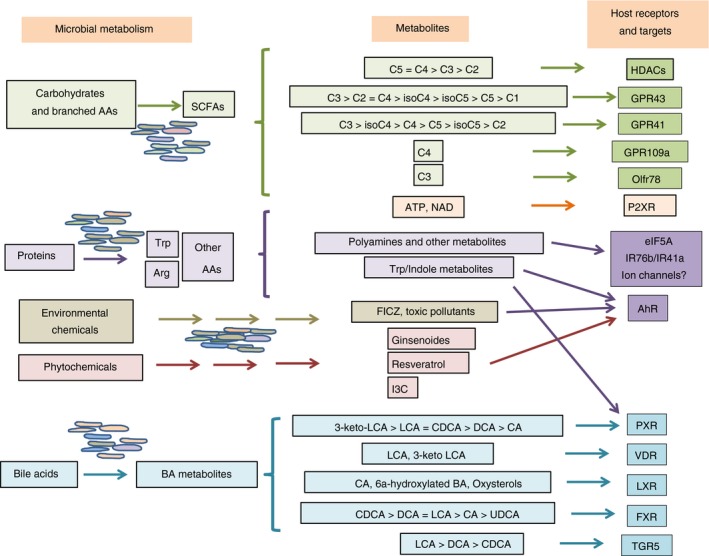Figure 1.

Production of microbial metabolites and their major receptors in the immune system. The gut microbiota can metabolize a variety of dietary materials, which include carbohydrates, proteins, lipids, plant‐derived molecules, bile acids and environmental contaminants. These materials are metabolized into short‐chain fatty acids (SCFAs), polyamines, ATP, indoles, phytochemical metabolites and bile acid metabolites. SCFAs function as histone deacetylase (HDAC) inhibitors to regulate gene expression and activate G‐protein‐coupled receptors (GPCRs) such as GPR43, GPR41, GPR109A (C4) and Olfr78 (C3). Other metabolites collectively activate nuclear receptors [aryl hydrocarbon receptor precursor (AhR), pregnane X receptor (PXR), VDR, LXR and farnesoid X receptor (FXR)], TGR5 and P2XRs. These receptors are expressed by various cells in the innate and adaptive immune systems to sense the presence of the gut microbial metabolites.
